Chapter 15: Communitywide Cooperation in Shelby County, Chester, and Atlanta
Crossroads: Change in Rural America activated existing partnerships and catalyzed new ones among people and organizations of many different kinds in Shelby County, Chester, and Atlanta. Each host organization accentuated the role of civic cooperation in its community’s history, as well as the importance of civic cooperation for the community’s future.
Likewise, many different people, organizations, and businesses in Shelby County worked together to fulfill the potential of Crossroads: Change in Rural America there. Two entities, the Shelby County Bicentennial Committee and the staff of the Lake Shelbyville Visitors Center, collaborated to host the exhibition. The Bicentennial Committee was organized to plan observances of the two-hundredth anniversary of Illinois’s statehood in Shelby County and consisted of various local civic and cultural leaders, including Brenda Elder, a volunteer with the Shelby County Historical & Genealogical Society, Save Our Chautauqua, and other organizations, and Freddie Fry, director of the Shelby County Office of Tourism. They developed a partnership with members of the Army Corps of Engineers based at the Visitors Center, including Ashley Florey and Sarah Haslett.
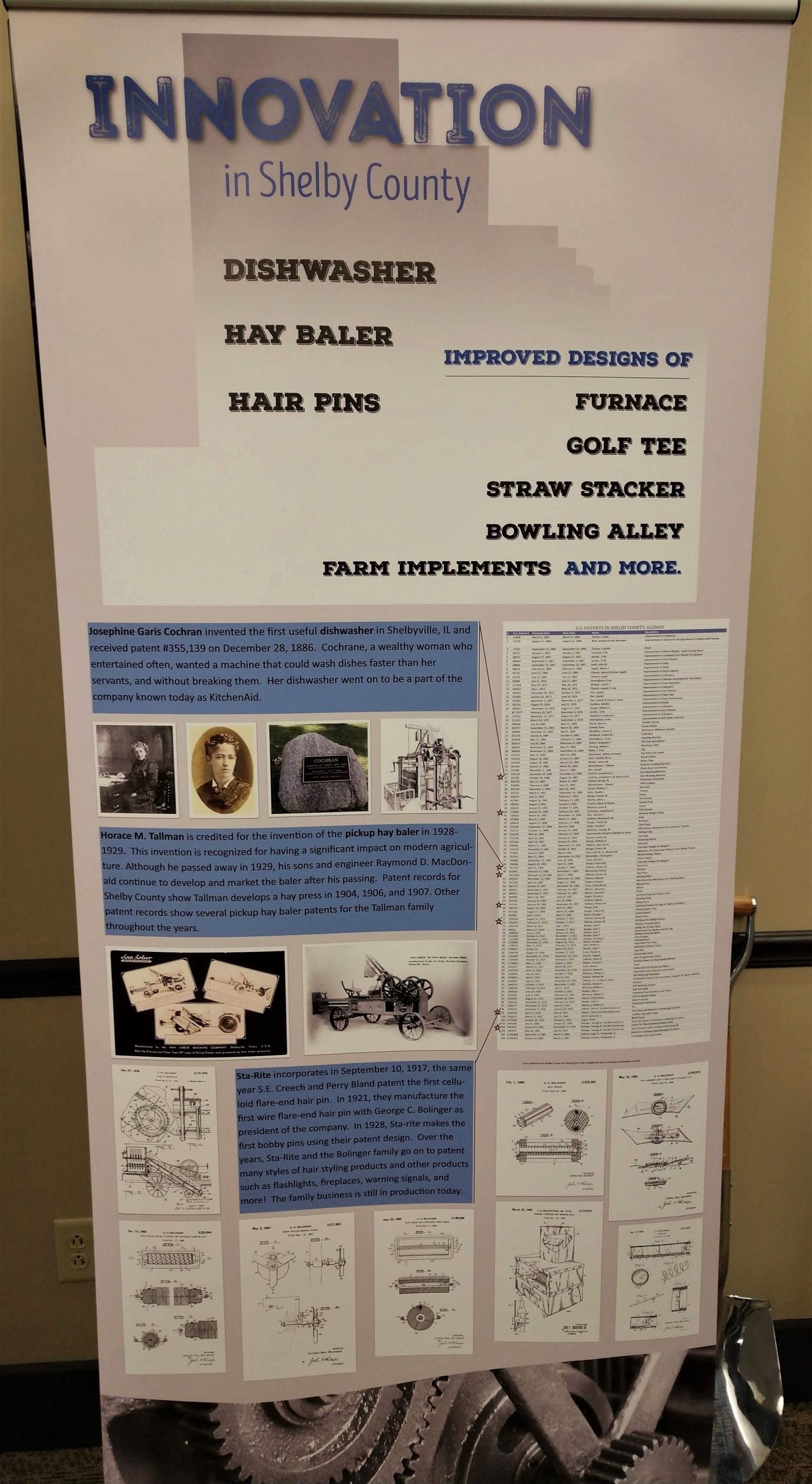
The Bicentennial Committee and the Visitors Center staff invited local businesses and institutions to submit potential content for their companion exhibition. Several, including Sloan Implement and Shelby Electric Cooperative, produced segments of the exhibition. Others provided information and artifacts, which Haslett synthesized into sections on themes such as industrial history, changes in land use, and social demographics.[1]
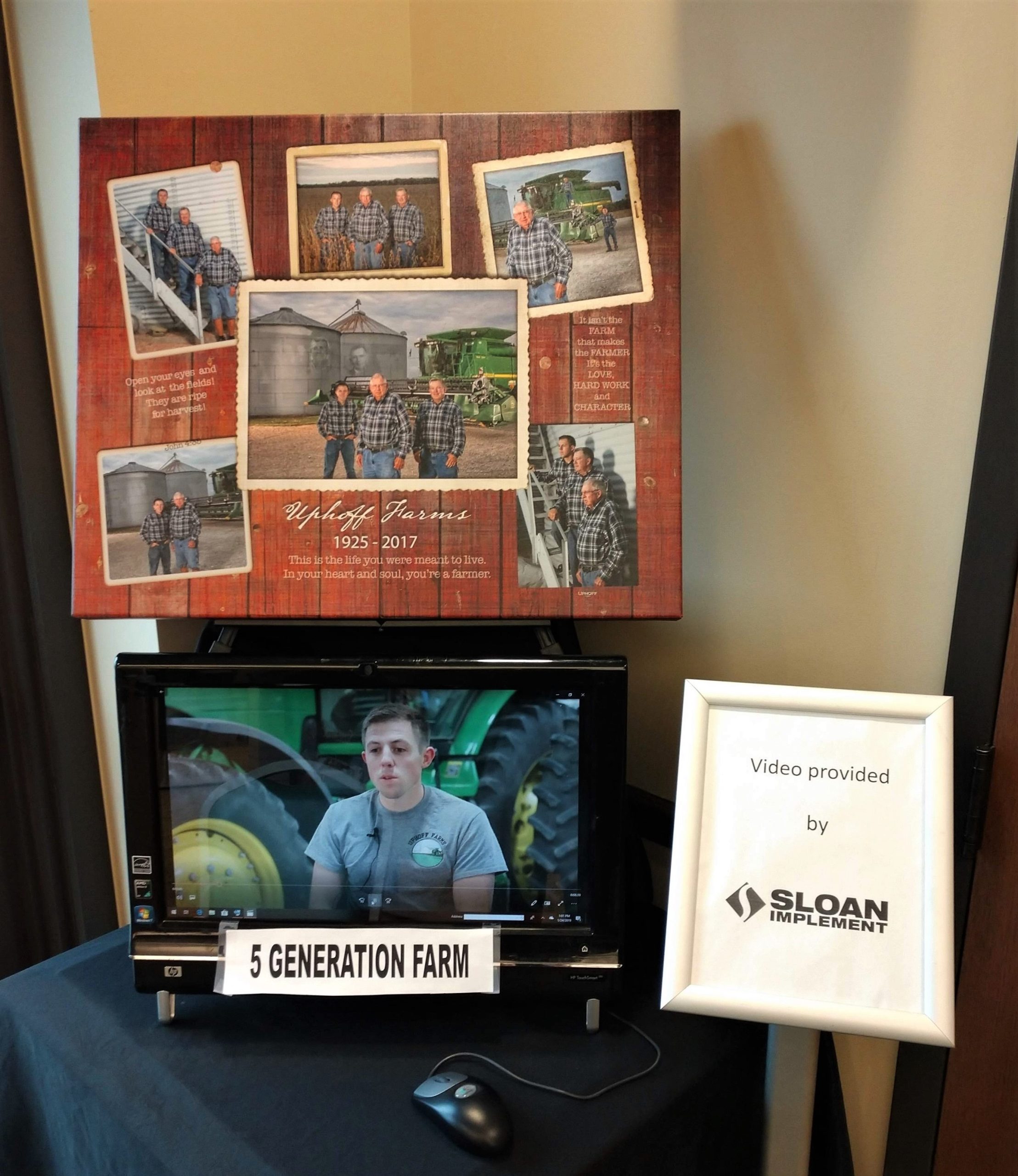
Crossroads also fostered the development or strengthening of relationships among people and organizations in Chester. Many local and regional entities, including public and parochial schools, the Randolph County Archives and Museum, the Chester Chamber of Commerce, Les Amis du Fort de Chartres, various civic organizations, the Southern Illinois University system, ILLINOISouth Tourism, and organizers of riverboat tours, collaborated with Chester Public Library in one way or another.
“I can’t say enough good things about how the community supported it,” said administrative librarian Tammy Grah. “It was just overwhelming, the financial support.”[2]
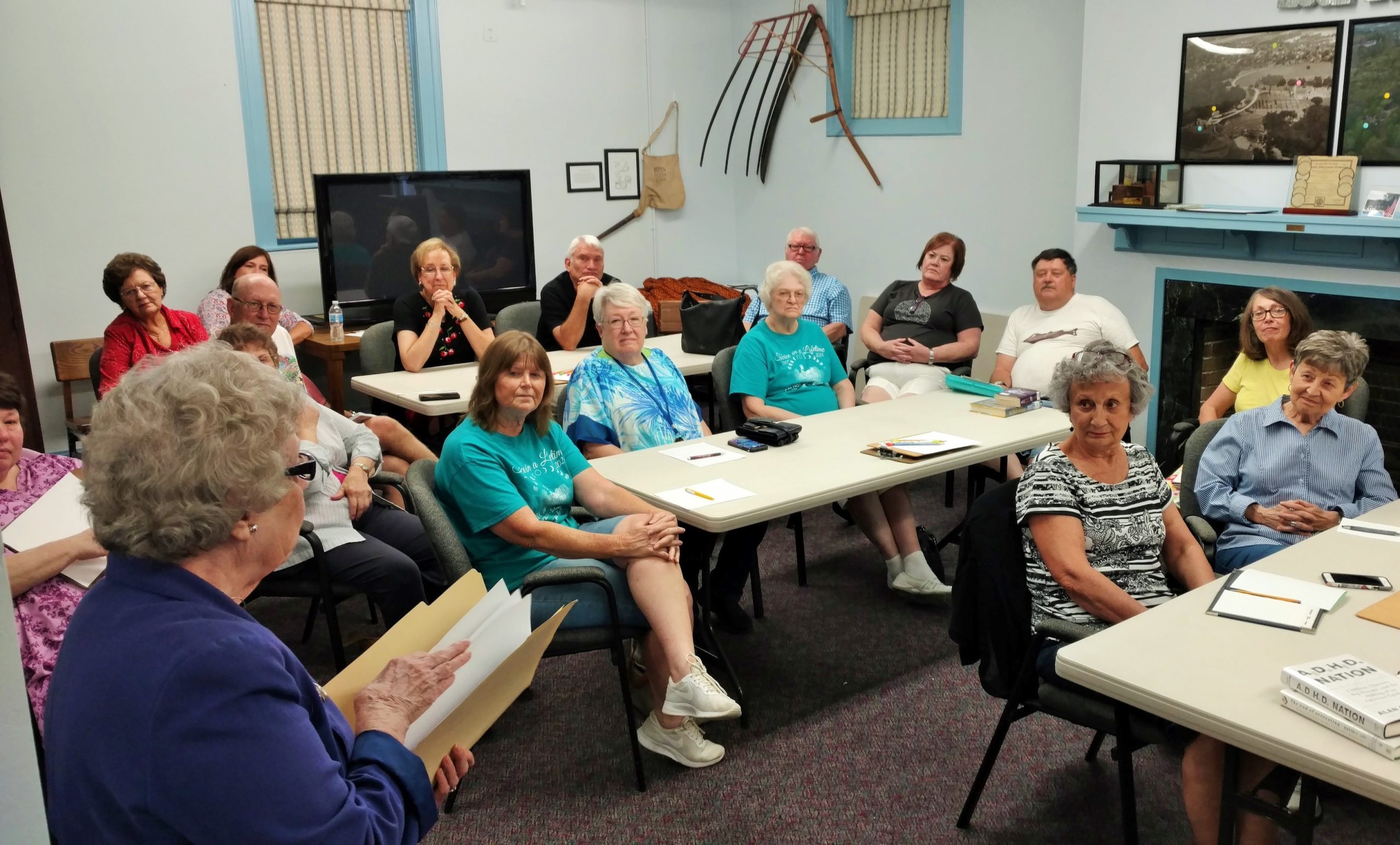
To reward the foremost donors while also celebrating the Illinois Bicentennial, the library held an event called “Party Like It’s 1818.” It featured a meal planned by Ellie Carlson, a historian of American foodways from the Chicago area, and a beer brewed from a period recipe by the St. Nicholas Landmark, a restaurant and brewery housed in the only edifice along Chester’s riverfront that remains in use as a commercial building, constructed in 1830. Many attendees wore clothing typical of the early nineteenth century, and several people portrayed early state officials. The event included a reenactment of the swearing-in of the first governor, Shadrach Bond, impersonated by local attorney Ed Fisher.

One of the many benefits that the library reaped from its hosting of Crossroads was that Shane Wagner, the local historian who presented “History & Mystery: Randolph County Folklore” in conjunction with the exhibition, subsequently donated the profits from sales of his book, Ghosts by the Riverside: The Haunted History of Chester and Old Kaskaskia (with visual illustrations by Melanie Barker), to the library and designated it a Chester Public Library publication.
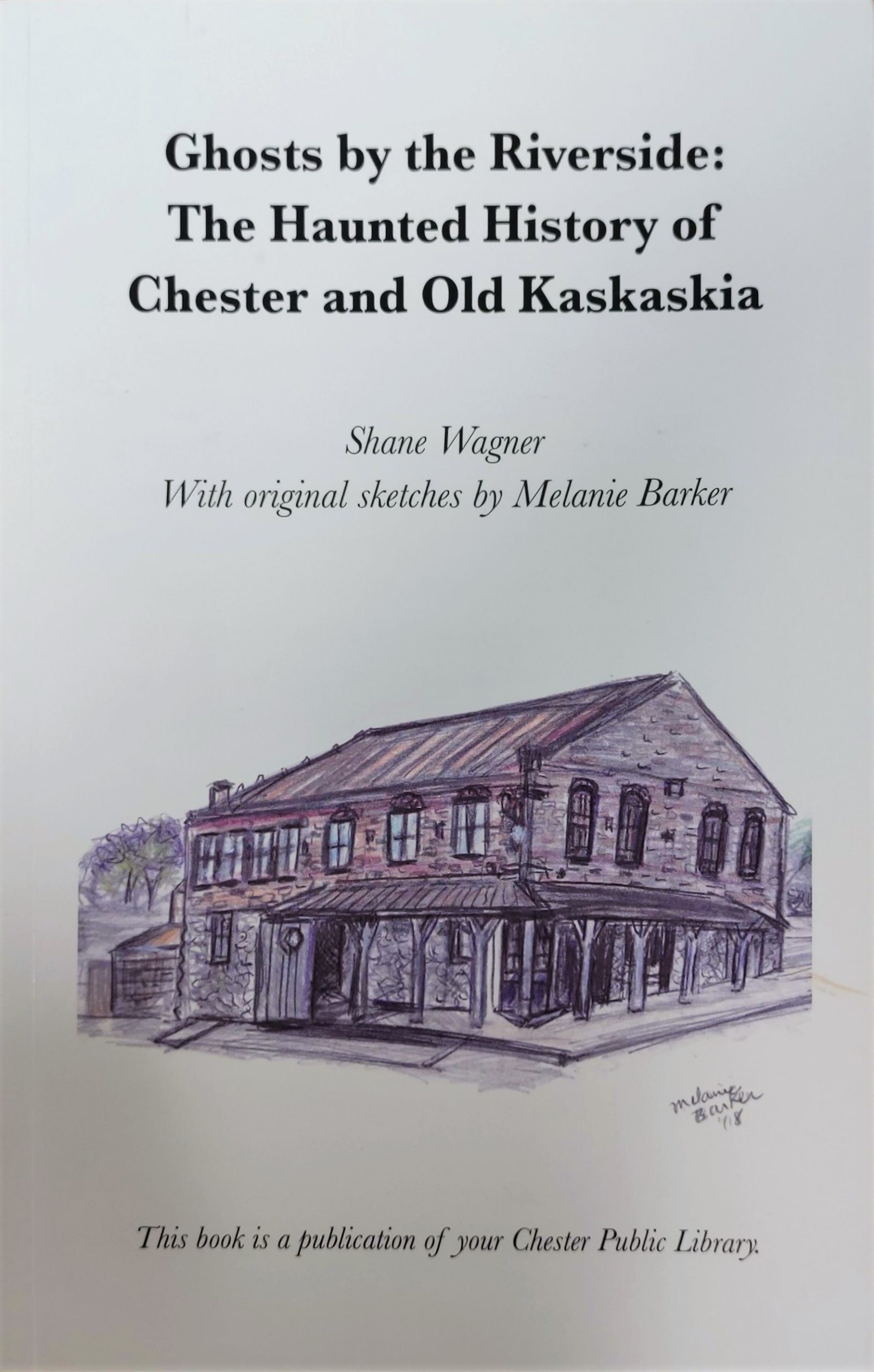
Area residents also appreciated the opportunity to get reacquainted with Debra Reid during her visit to the library as co-curator of Crossroads: Change in Rural America. Library volunteer Brenda Owen and her husband subsequently visited with Reid at The Henry Ford during a trip to Michigan.
Additionally, Chester Public Library sought to use the exhibition and activities associated with it as opportunities to cultivate civic and cultural engagement, thereby enhancing the quality of life in the Chester area not only in the present but also in the longer term. Activities for children, planned and facilitated by Melissa Gross, a retired teacher and library volunteer, were very popular. Many local school classes toured the exhibition, and a group of students from Coulterville High School in northeastern Randolph County who were particularly interested in local history and museum studies also visited.[3]
The concluding section of the library’s companion exhibition discussed civic involvement in Chester, past, present, and future. It featured a quotation from an editorial about Charles Briggs Cole, officer and co-manager of the H.C. Cole Milling Company and benefactor of the library, published in the Chester Herald Tribune in the 1920s: “A city is fortunate indeed which numbers among its citizens a man who has a vision to build for the future that which will not pay dividends in dollars and cents but in education, culture, and progress.” The segment encouraged viewers to contemplate the question, “What can you do for your family, community, country, or world?”[4]
Owen commented, “This was an attempt to say, ‘Look, you have the ability to affect the future. How are you going to do that?’ Even though that was just one large exhibit piece, I think it was a piece that got people thinking about how what happens going forward is up to us.”

“The community response to our exhibit was overwhelming,” added library volunteer Carolyn Schwent, who was responsible for publicizing Crossroads and related programs and did so robustly. “It took an overwhelming amount of time and work, but it was worthwhile.”[5]

Among residents of the Atlanta area, “[t]here was a lot of pride in the fact that we had obtained the exhibit,” said Catherine Maciariello, then director of Atlanta Public Library. “There was really good attendance.”[6]
According to Maciariello, many people volunteered to help in ways that reflected their specific skills, such as building exhibit cases, doing graphic design, painting portions of the community mural, and conducting oral-history interviews with local public-school alumni. She observed that volunteers tended to look to the staff of the museum and the public library to coordinate the project as a whole and to assign them specific tasks related to their particular interests. That scenario differed somewhat from what she recalled having been the norm a generation or two ago, when local residents approached communitywide projects by pitching in and doing whatever was needed in a less structured, more organic way. She hypothesized that the way in which the community helped to implement Crossroads and related programming might be indicative of a trend toward a more specialized division of labor in small-town civic and cultural activity.
In the months preceding the exhibition’s visit to Atlanta, the community experienced a series of internal controversies and divisions over local political and social issues, some of which had repercussions for the Atlanta Public Library District, of which the Atlanta Museum is a part. The opportunity to host a Museum on Main Street exhibition, however, made an “incredible impact” on the morale of the district’s staff and board, according to Maciariello: “Coming off of what had been a kind of unpleasant year, it turned us around and refocused us on the positive things. It gave us really positive things to work on, and it reminded us of our real, foundational capacity to accomplish things of great value and great significance.”
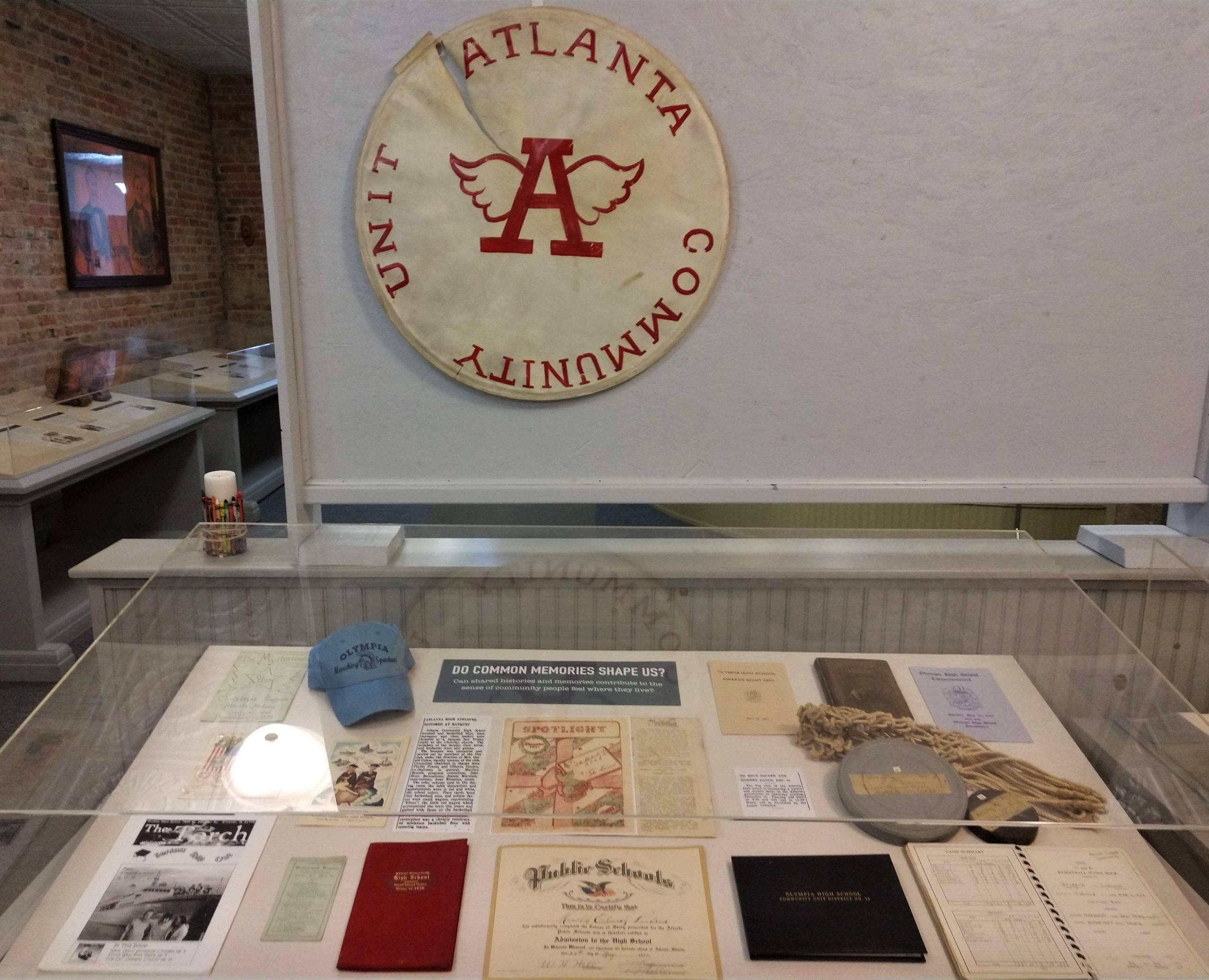
Maciariello continued, “Every conversation I had with people was about how excited and proud they were as a community and of the library and museum that we could both attract this exhibit and mount it and do all of the programming and raise all of the money to pay for it so that it didn’t cost the taxpayers money. There was just an incredible sense of pride in the accomplishment of the institution, and it reminded people of what we aspire to be and what we have been. Even through this time of difficulty, we’ve tried to keep our eyes on the prize, to use the old cliché, and I think this was a reminder of how potent that is—that when you keep your eyes on what you aspire to be and what you aspire to do, there’s no hampering the ability to complete that.”[7]
- Brenda Elder and Freddie Fry, telephone interview with author, October 1, 2019. ↵
- Tammy Grah, Brenda Owen, and Carolyn Schwent, telephone interview with author, October 22, 2019. ↵
- Tammy Grah, Brenda Owen, and Carolyn Schwent, telephone interview with author, October 22, 2019. ↵
- Companion exhibition accompanying Crossroads: Change in Rural America, Chester Public Library, Chester, IL, September 8-October 20, 2018. ↵
- Tammy Grah, Brenda Owen, and Carolyn Schwent, telephone interview with author, October 22, 2019. ↵
- Catherine Maciariello, telephone interview with author, October 23, 2019 ↵
- Rachel Neisler, telephone interview with author, October 23, 2019. ↵



